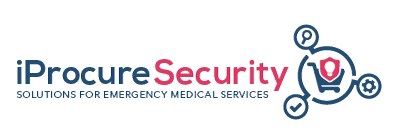483Terms
Help to improve our database
We are continuously collecting common terms used by the Emergency Medical Services practitioners across Europe. Help us improve our content and fill out the online form. If you are not able to find what you are looking for, please let us know by sending us a message through our contact page.
Your feedback is important for us and it will be fed into our Database for the EMS glossary.
Add new EMS termTo unify the communication and knowledge exchange between the emergency medical teams across Europe iProcureSecurity seeks to translate the identified EMS terms in all consortium languages.
That is why the project encourages everyone willing to contribute, to suggest and add missing terminology translation.
Add new translationiProcureSecurity Glossary
Centers that design processes, practices, systems, policies and tools to reduce critical safety risks.
The scene can be any place, such as at home, in the workplace, in a vehicle, on land, avenue or street, where an emergency patient or an injured person is reported to be. The properties and the safety/security conditions of the scene, including of course the technological infrastructure (cameras, the alarm system, elevators and stairs etc.) are crucial to the success of the intervention of the EMS professionals. The outcome is influenced too whether the incident happens in forest areas, rivers, lakes, at sea or in small islands, how the weather and the season of the year are, if it is close to a border, in urban or rural areas, in high rise buildings etc.
The safety and protection of first responders and the emergency services have top priority. Subsequently, the protection of all concerned,including those affected by the emergency must be continuously assessed and ensured.
A semi-automatic AED automatically diagnoses heart rhythms and determines if a shock is necessary. If a shock is advised, the user must then push a button to administer the shock.
Separation from the deployment of commercial volumes of end-products refers to the complementarity of PCP, which focuses on the R&D phase before commercialisation, and PPI, which does not focus on R&D but on the commercialisation/diffusion of solutions.
Separation of PCP from the deployment of commercial volumes of end-products refers to the complementarity of PCP, which focuses on the R&D phase before commercialisation (the purchase of R&D services), and PPI, which does not focus on R&D but on the commercialisation/diffusion of solutions (the purchase of innovative products that are ready for commercial deployment)
Acute respiratory distress syndrome occurs when the muscles used in breathing are forced to work harder, causing labored and inefficient breathing. An abnormally low level of oxygen in the blood (hypoxemia) occurs
Trauma is defined by the American Psychological Association (APA) as the emotional response someone has to an extremely negative event. While trauma is a normal reaction to a horrible event, the effects can be so severe that they interfere with an individual's ability to live a normal life. Major trauma is any injury that has the potential to cause prolonged disability or death. There are many causes of major trauma, blunt and penetrating, including falls, motor vehicle collisions, stabbing wounds, and gunshot wounds.
The emergency management process, triggered by an event related order, begins with the assessment of the situation, which informs a situation analysis. For this purpose, information that is already available and subsequently gathered needs to be recorded and supplemented (where necessary), and evaluated with regard to the situation.This must include potential damage on site and risks to individuals.
Reports containing updated information on the main incident.A Situation Report typically covers a specific period of time,is often divided into sectors or relates to one sector of activity.

